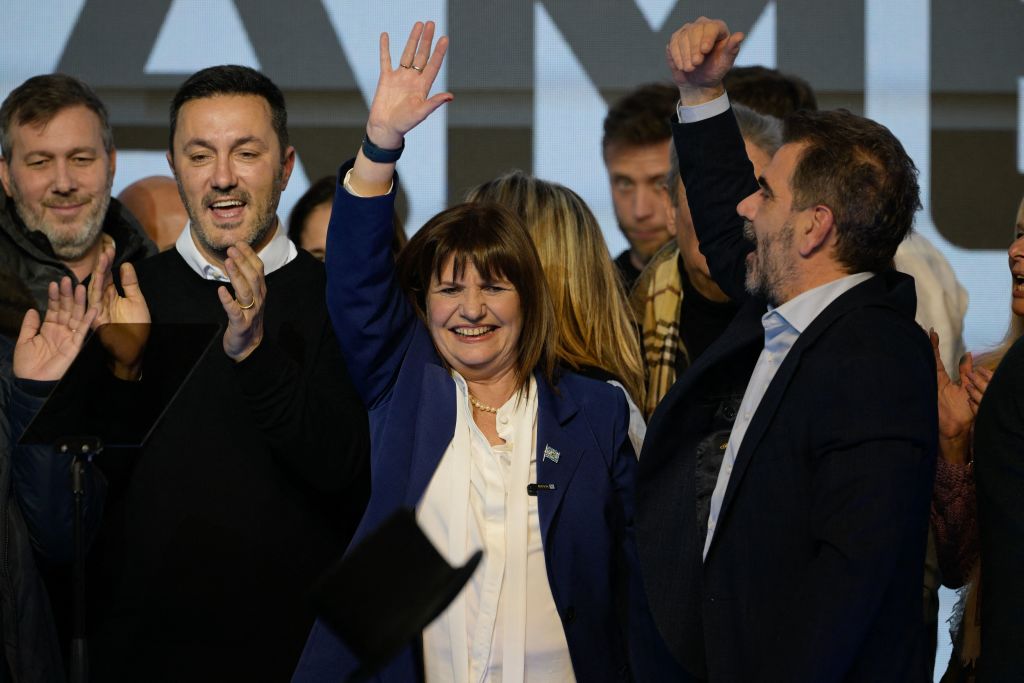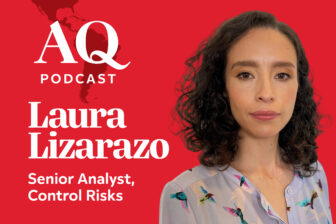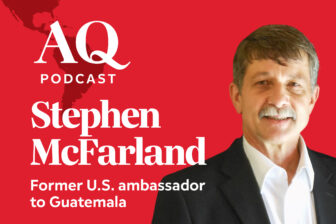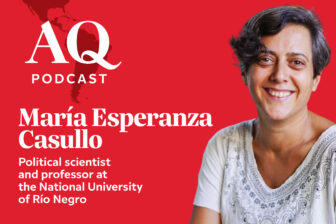BUENOS AIRES—If Patricia Bullrich was recalculating under the glare of the spotlight, she didn’t show it.
Standing on a podium after securing the presidential nomination for Argentina’s Juntos por el Cambio (JxC) center-right opposition coalition, the 67-year-old political veteran was all smiles and embraces, amid boisterous cheers from her supporters.
“We’ve been given the opportunity to lead a profound change in Argentina,” said Bullrich, one that “leaves corruption behind” and “opens the road to austerity.”
The results of the August 13 primary elections signaled in the clearest terms that many Argentines, suffering from 115% annual inflation and a currency that sheds value at an alarming rate, are ready to take a sledgehammer to the system. But they left unclear who they thought should do the job. Bullrich is just one option: there’s also Javier Milei, a far-right libertarian candidate with a cult-like following who wants to adopt the US dollar as official currency in Argentina and abolish the country’s central bank. On Sunday he stunned the nation by netting the highest vote total (around 30%), topping expectations and establishing himself as the man to beat.
With the rise of Milei, Argentina, a country traditionally polarized between left- and right-wing factions, now has three strong options with similar support—changing the political landscape in profound ways. That leaves Bullrich, a shape-shifting force with her own message of overhaul, in a tight spot.
“She has to signal order,” said Pablo Touzon, a Buenos-Aires based political analyst, on Monday. “The guy who is going to destroy the system already exists.”
That won’t be easy: if she goes further to the right, she risks losing moderate voters within her own coalition to the centrist Massa. And if she appears too conciliatory, she could be vulnerable to perceptions that she is part of the rot that Milei has vowed to eradicate. Horacio Rodríguez Larreta, who had also vied for the presidential nomination of Juntos por el Cambio, had tried a more centrist approach, and ended up with just 11% of the vote.
Indeed, supporters of Bullrich often refer to her tough-on-crime attitude as security minister—and the general hardline persona that she transmits, especially among a surge of drug war-related violence in the city of Rosario—as part of her appeal, so she will have to tread carefully if she tweaks her message.
“What she has to do is more difficult,” said Touzon. “Even though she is very hard with her message, she has a lot of political experience,” he said, and a track record of navigating the length of the political spectrum. “She probably will be able to maneuver.”
Patricia Bullrich’s many political incarnations
It has been a long political road for the woman once nicknamed la piba—“the girl”—and who is now more frequently known as “the bulldog” or “the iron lady” in the colorful Argentine media.
Bullrich comes from a patrician background—among her ancestors is a government minister and a Buenos Aires mayor; the family name graces a high-end shopping center in the capital city. As a teenager she rebelled, joining the leftist youth wing of the party of exiled populist leader Juan Domingo Perón. Bullrich was among the massive crowds that gathered to welcome Perón back to Buenos Aires in June 1973, only to be sent scattering as right wing factions within the movement opened fire on the young left-wing adherents, killing 13. Bullrich denies claims she was once a member of the militant left-wing Montoneros guerrilla group, despite documentation by investigative journalists to the contrary.
What is certain is that she fled the country in 1977, as a newly installed military dictatorship cracked down on dissent, murdering and disappearing thousands of people. After her return, and Argentina’s return to democracy, she drifted from the neoliberal section of Peronism, headed by then-President Carlos Menem, to the Alianza coalition created by president Fernando de la Rúa, where she carved out a take-no-prisoners persona, sparring with one of the biggest union bosses in the country on live television. She oversaw a 13% cut in the wages of state workers and some pensioners as minister of labor, a move she later defended as the kind of “strong decisions” that are necessary in difficult times.
Under the conservative government of Mauricio Macri (2015-2019), she once again gained prominence as minister of security, coming to the defense of police officers who pulled the trigger in the line of duty and hardening the government’s stance on irregular immigration. In 2019, she was criticized by a former ally for emulating Brazil’s Jair Bolsonaro on security policy, a comparison that didn’t seem to faze her. (Bolsonaro expressed support for Milei last week.)
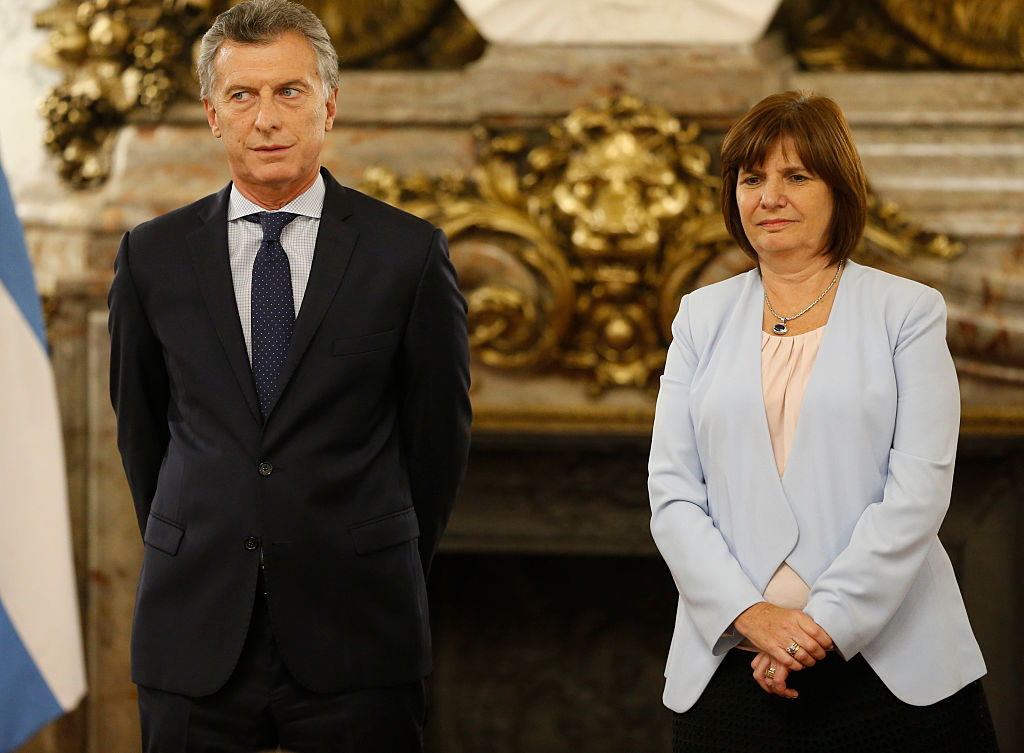
Ricardo Ragendorfer, a journalist and author who spent seven months researching Bullrich for a book, says her career is defined by this “constant pilgrimage across the political spectrum.”
“I don’t think it’s about someone who is changing,” he said, “But a political figure who [is] always on the side of the winner.”
In that sense, Bullrich’s metamorphosis can be interpreted as a mirror of Argentine society—a society now exhausted and fed up. Yet how she will respond to greater public appetite for change remains to be seen. Bullrich’s camp has opposed some of Milei’s more radical ideas, such as eliminating the central bank and ditching the peso for the US dollar, but she plans “deep structural changes” that include lifting currency controls “as soon as possible” and trading a system of social welfare that she says “humiliates” people and is riddled with corruption, for unemployment insurance with strict time limits. Even before the primaries, when the polls had suggested that they were in a stronger position, Bullrich’s camp was talking about working with Milei on slashing public spending.
“I think Javier Milei will have a critical role,” said Luciano Laspina, a legislator and Bullrich’s economic advisor, during a virtual talk with the Wilson Center earlier this month.
Could dramatic spending cuts prompt social unrest? A member of Bullrich’s own party has warned that she risks ending up like the government of Fernando de la Rúa, which imploded at the end of 2001 amid widespread protests and a debt default.
Wearing vintage Italian sunglasses and holding an Argentine flag as she waited for Argentina’s “iron lady” to arrive at a campaign event in Buenos Aires this month, retiree Alicia Pereyra was hopeful. The 80-year-old has been a fan of Bullrich since watching her take on the big union bosses on television more than twenty years ago. She likes her calm demeanor, and confrontational style. “I hope she orders things,” she said. “We don’t have any other choice.”
Alcoba is an Argentine-Canadian journalist based in Buenos Aires.


